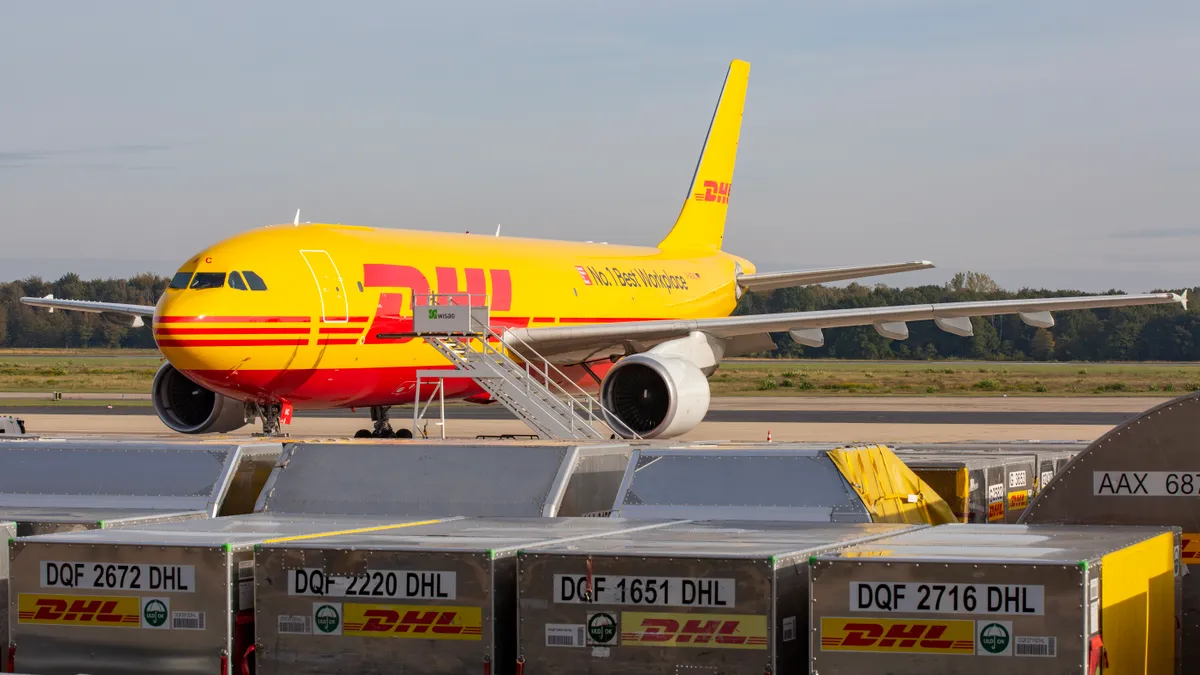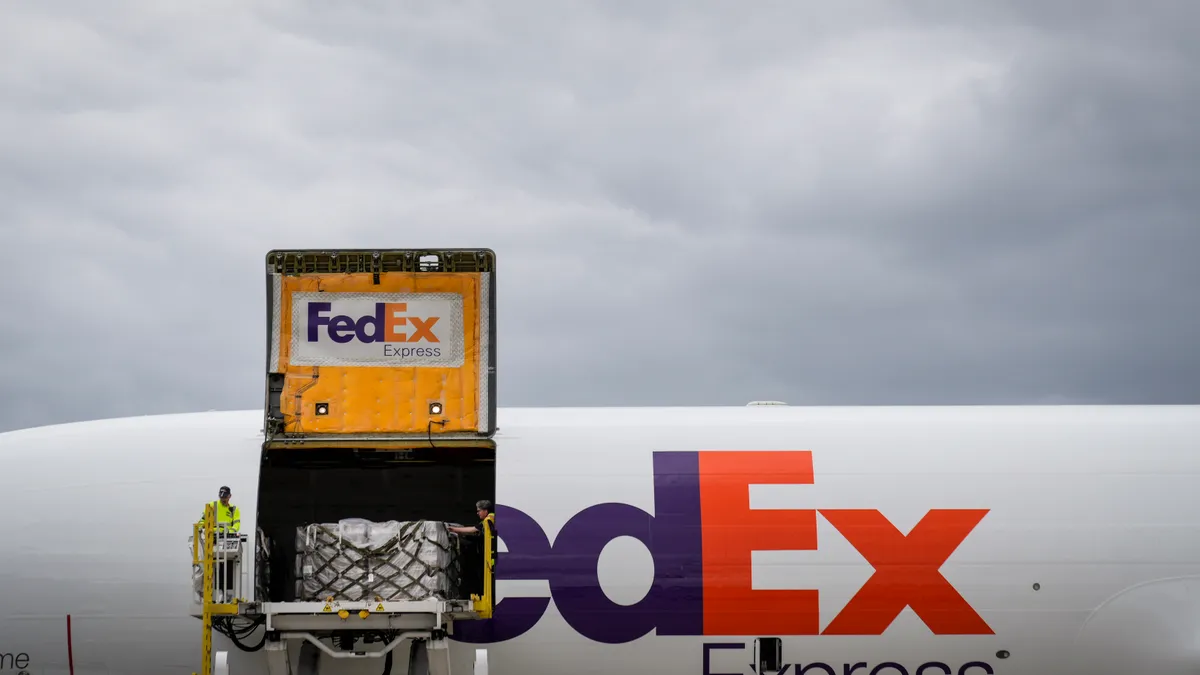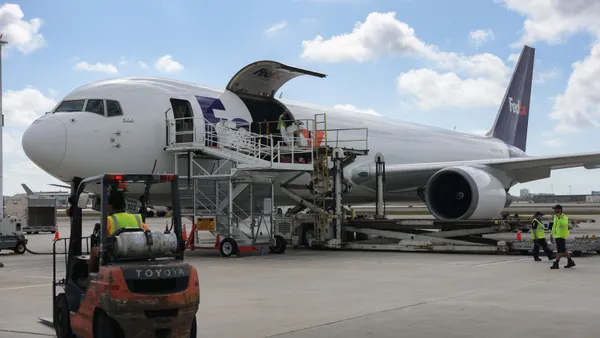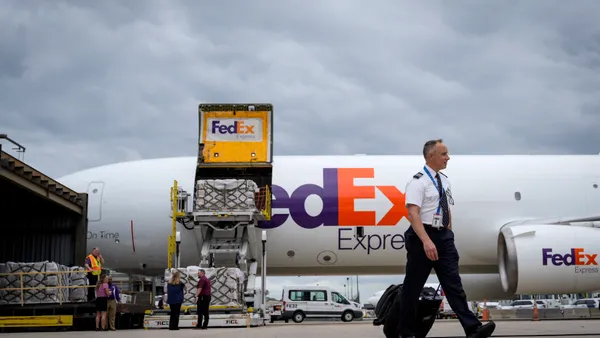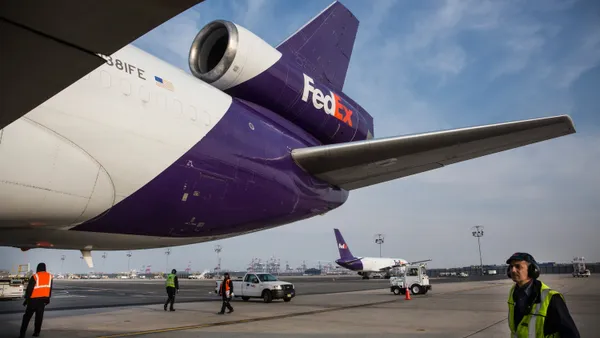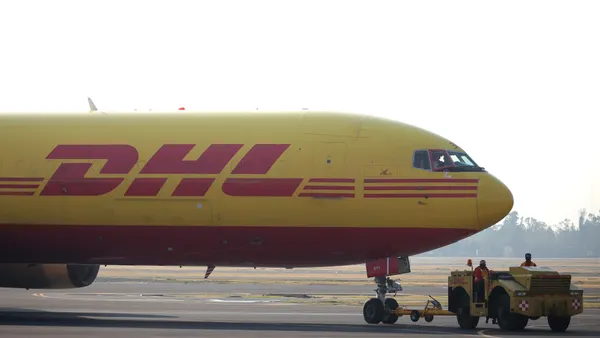Dive Brief:
- U.S. tariffs have significantly disrupted seasonal air cargo flows. After months of companies frontloading shipments to avoid the tariffs, demand growth slowed 3% year over year in September as activity decreased on Transatlantic and Transpacific trade lanes, Xeneta reported Oct. 2.
- The slowdown in volume growth has also impacted air cargo spot rates, which fell for the fifth consecutive month in September, down 4% to $2.54 per kilogram, according to Xeneta.
- Prices also saw a month-over-month dip, with average Transpacific and Transatlantic spot rates slipping 2% to 3% in September.
Dive Insight:
Despite tariffs prompting a shift in supply chains toward Southeast Asia, spot rates on that trade lane didn’t grow. Instead, spot rates on that corridor dropped 22% year over year, and 2% month over month, per Xeneta.
Meanwhile, the drop in e-commerce volumes due to the removal of the de minimis exemption “left a gaping hole” in the Transpacific market, Xeneta reported. The demand shift then led carriers to move freight capacity away from the region.
The Transatlantic trade lane has also seen a shakeup, with Europe to U.S. volumes dipping after months of frontloading. The start of carriers’ winter schedules will further reduce Transatlantic capacity, as it’s expected that the drawback in passenger belly capacity after the summer months will prompt a 20% reduction in capacity. Although the move is expected to reverse freight rate declines, Niall van de Wouw, Xeneta’s chief airfreight officer, said that it is a “consequence of supply, not demand.”
“Over the previous two months, we’ve seen how air cargo has gained from ‘piggybacking’ on global uncertainty, whether that’s frontloading supply chains or modal shift from ocean to air to move goods more quickly before tariffs took hold,” van de Wouw said. “September’s data is an early indication that this is lessening as some stability starts to return on major corridors and everything is less hectic on a global level.”
Contract negotiations are shifting
Market uncertainty is also having a ripple effect on contract negotiations between shippers and freight forwarders, Xeneta reported. In Q3, the share of six-month deals rose almost 10 percentage points year over year to 22%. Those contracts are set to expire just after the peak season and ahead of the following annual cycle.
In comparison, the share of contracts lasting more than a year has dipped, likely due to doubts surrounding a long-term market outlook.
“There is such limited bandwidth for shippers,” van de Wouw said. “They are looking for stability at a reasonable, competitive rate, and want to go long on contract negotiations preferably, because it’s such a painful process for them trying to plan on a quarter-by-quarter basis.”
But there is still hope for Q4, according to van de Wouw. Although market growth has slowed following a “better-than-expected” demand in July, he expects 2025 to end with a 3% to 4% boost in air cargo demand.
“Q4 for airlines and freight forwarders will likely not be as good as hoped, but 2025 overall may not be as bad as they feared,” he said. “A year ago, at this time, we talked of a ‘peak season to be proud of’ and air cargo on its final approach to double-digit growth. One year down the line, the market looks very different.”



